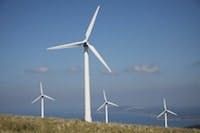The World Energy Council’s latest energy efficiency study reports a general slowdown in energy efficiency improvements, it was announced today.
The report, “World Energy Perspective: Energy Efficiency Policies,” is produced in collaboration with France’s energy and environment agency, ADEME. The report shows that more and more countries are now involved in energy efficiency policies. It also highlights numerous factors that have affected energy efficiency progress across 85 countries, representing more than 90% of global consumption.
Commenting on the findings at the World Energy Congress in Korea, François Moisan, executive director of ADEME and Chair of the report, said: “Our latest study shows the increased extent that most governments are concerned about energy efficiency. About 80% of the countries surveyed have quantitative efficiency targets, while six years ago only 40% had such targets. Labels and standards for energy efficiency appliances are implemented in all OECD (Organization for Economic Cooperation and Development) countries and in 90% of Asian countries. Regulations on energy-consuming equipment and buildings remain the most common measures deployed. The progress in energy efficiency over the past 20 years equated to one-third of global primary energy consumption in 2011.”
Christoph Frei, secretary general of the World Energy Council, said the slowdown in energy efficiency improvements must be reversed if future progress was to be made on a stable, sustainable basis.
“Energy demand continues to grow, albeit largely against a slowing trajectory. However, the rate of decline in energy intensity has reduced at a much sharper rate,” Frei said. “While an uncertain investment outlook, created by the global economic crisis, explains a degree of this decline, more worrying is the growth in certain uses of energy such as household electricity and road transport. This problem is compounded by continually rising energy demand, driven by non-OECD growth where energy intensity is higher than in most OECD countries.”
Most countries have significantly reduced total energy use per unit of GDP over the last three decades, the study finds. The improvements are largely attributable to more efficient key end-uses, such as vehicles, appliances, space heating and industrial processes. New standards, educational campaigns and regulatory requirements have helped to move efficiency development forward and have contributed to improved energy efficiency in OECD nations. Technology development, response to rising energy prices, and growing competition in industries, have also forced companies to cut energy costs.
Western Europe currently boasts the lowest energy intensity, while the CIS has the highest of the large consumer regions, using more than three times more energy per unit of GDP than Europe.
China, Africa and the Middle East all see intensity at two times the European average, while Latin America and OECD Asia Pacific are around 15% higher. India and other Asian countries see their intensity at around 50% higher than Europe, with North America at around 1.45 times the European average.
High energy intensities can be attributable to a number of factors: industry structure, low energy prices, and share of energy intensive industries, for example.
The WEC’s “World Energy Scenarios: Composing energy futures to 2050” report sees that global energy demand will grow by one-third between 2010 and 2035, with 90% stemming from outside the OECD community. China and India account for half of that growth, with China alone accounting for a third. However, China’s per capita energy consumption in 2035 will still be less than half that of the United States or Australia.
“While it is important to recognize where progress has been made, it is also crucial to know when the pace of change falls away, and why,” Frei said. “Development action on new policies and strategies has never been more urgent. Every region in the world, OECD and others, have a part to play and we look forward to engaging in the discussion about how to implement these new processes on a long-term, sustainable basis during the World Energy Congress.”
The full report can be downloaded at www.worldenergy.org/publications
Source: World Energy Council


